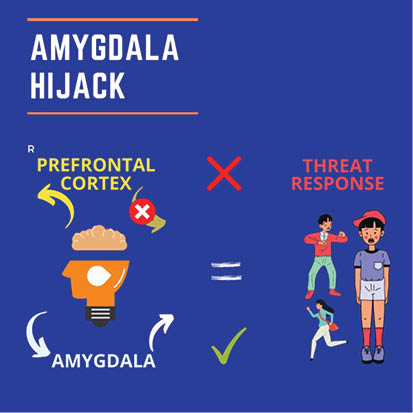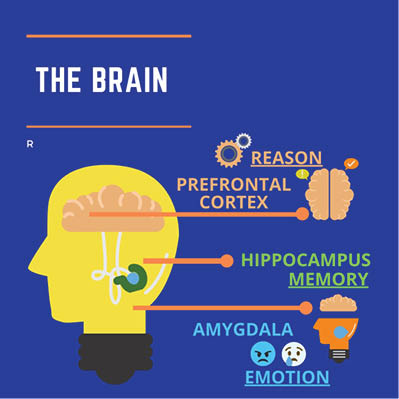Hormuzd Daruwalla is a professional and successful Mental Health Expert, specializing in NLP, GESTALT, HYPNOTHERAPY, TA and REBT. A dynamic and multi-dimensional professional, who has tasted success across different genres, Hormuzd holds degrees in Civil Engineering and Management, and manages multiple businesses as an entrepreneur and owner of a reputed design and building firm, a trading firm and a salon. He shares his expertise with the NGO – Adore, a mental health helpline, as also does a lot of pro bono work, to give back what we take from society. He wishes to help our readers understand the basics of how our minds work – as the platform from where we can elevate our thoughts and our lives.

Let me start with a joke. I asked my friend, Behnaz, “Your hubby Neville is such an angry man! How do u deal with it?” She said, “It’s simple – I clean my bathroom after every fight.” I was amazed! “Really? How does that help?” She said, “I use his toothbrush!!”
Cliched jokes apart, everyone has a story or two of anger and it’s fall outs. That it’s an emotion which gets triggered – we all know. But, what actually happens? Where and how does it all take place? Let’s take a look at it, Sheldon Cooper style! Science buckles on!!
Everything we see is perceived by the ‘Amygdala’ and the ‘Cerebral Cortex’. The Amygdala is where we house our emotions. It’s the primitive part of our brain, associated with our survival skills and the fight or flight response. In keeping with this function, it works at lightning speed and activates a physiological response to keep us out of danger. The ‘Cerebral Cortex’ is the advanced thinking part of the brain, responsible for reason, strategy and rational thought. It is also the part of the brain that governs most of our responses. Obviously, this takes a little longer than the cowboy – Amygdala!

However, when some trigger provokes a strong memory in the amygdala, it can override the prefrontal cortex and react. This is known as an ‘Amygdala Hijack’. The Amygdala sends out signals to your body to release hormones that will help you fight a perceived threat. This is where your anger story starts… And as we know, since the cortex was not involved, there is little activation of reason and logic!
There are two kinds of people – the ones who erupt like Mount Vesuvius when they get angry – all shouting and screaming… Let’s call them the ‘Dragons’. The other sect comprises those who keep the anger within, trying to portray that cool attitude… Let’s call them the ‘Rabbits’.
Though Anger is a very strong emotion, you can’t be angry for a long time. You can be sad after that or before that. But it lasts from seconds to maximum, a couple of minutes. Once the anger has subsided, is when you make the decision of how you will react to that event.
How To Tame A ‘Dragon’: Dragons are dramatic people, they feed on drama, they like throwing tantrums. When angry, they want the whole world to listen to them; they couldn’t care less about anyone at that point and they’re unable to see beyond themselves. They won’t listen to reason; anything you say or do will just feed the dragon!
The trick here is to not engage in conversation, or even better, leave the room. An apology or touch could maybe calm the dragon. But it’s best to avoid them at the peak of their anger. On the flip side, they also cool down faster, shouting and screaming takes too much energy! They may have lesser or no resentment once the event has passed!

Beware Of The Rabbit: Rabbits are scary ones – they hold the anger within, they feed it. After the event has passed, they continue to harbor resentment. They constantly think of how to get back or they sulk and wallow in guilt, sadness, self-pity. All this is very detrimental to them and to those around them. The effects of such anger are seen with time. It’s scientifically proven that harboured anger elevates cortisol, which raises the blood sugar levels in the body.
So, how do you deal with them? After the event has occurred, sit down and talk to them; do not try and sweep it under the carpet. Let them talk, give them a hearing. See that you let them talk and get it out, no matter what the content. Let the resentment and other conflicting emotions get flushed out.
Controlling The Beast Called Anger: Here are a few effective tips on how to deal with your anger:
Taking Deep Breaths: is the most common way to activate cortisol and oxytocin in your system. It really affects the physiology of the body and lets your frontal cortex take charge.
The ‘No Anger Zone’: Let us assume that every morning at tea-time, you really get angry with your kids. This is a pattern that you have realized. Make this your ‘NO ANGER ZONE’. Before you fill your tea-cup, mentally tell yourself, “I won’t get angry at the dining table.” If you do get angry, then at that point itself, go into another room and stay there until the emotion passes.
Rationalization and Resources (R & R): This exercise can be done when you are calm and composed. Get into the refection zone. Ask yourself these questions – “What is the content or situation that makes me angry?” or “What are the triggers, what are the words or retorts that make me angry?” or “Do I feel angry at certain time in the day?” Answer these truthfully. Ask yourself what resources you possess to counter these. Find solutions to these questions in the reflection zone. Over time, you will notice a sure change!
And remember, Anger Is The Only Dog You Don’t Feed!
- Decision Making And Procrastination - 10 October2020
- Anger - 8 August2020
- Why We Do What We Do - 25 July2020
